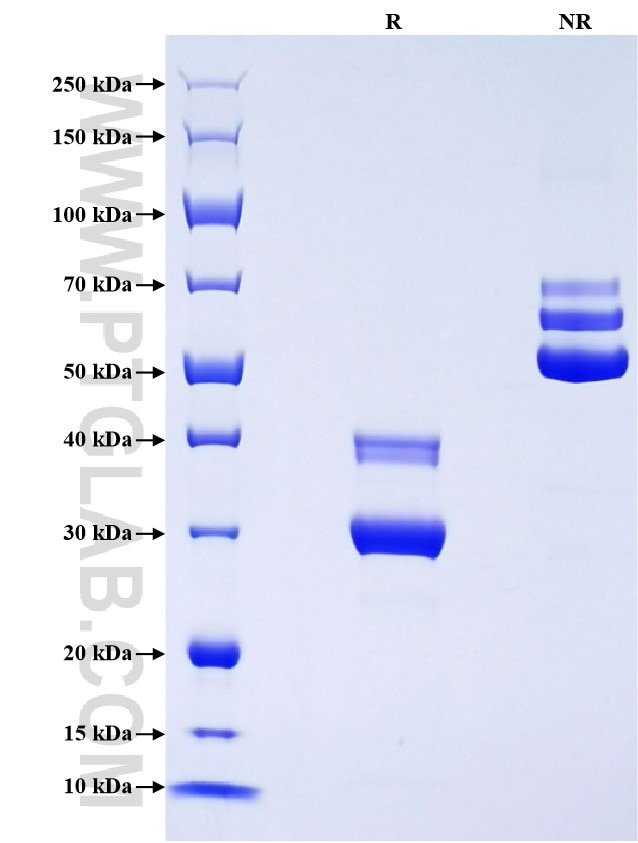Recombinant Rat CXCL10/IP-10 protein (mFc Tag)
Species
Rat
Purity
>90 %, SDS-PAGE
Tag
mFc Tag
Activity
not tested
Cat no : Eg3207
Validation Data Gallery
Product Information
| Purity | >90 %, SDS-PAGE |
| Endotoxin | <0.1 EU/μg protein, LAL method |
| Activity |
Not tested |
| Expression | HEK293-derived Rat CXCL10 protein Ile22-Pro98 (Accession# P48973) with a mouse IgG Fc tag at the C-terminus. |
| GeneID | 245920 |
| Accession | P48973 |
| PredictedSize | 35.3 kDa |
| SDS-PAGE | 30 kDa and 38-40kDa, reducing (R) conditions |
| Formulation | Lyophilized from 0.22 μm filtered solution in PBS, pH 7.4. Normally 5% trehalose and 5% mannitol are added as protectants before lyophilization. |
| Reconstitution | Briefly centrifuge the tube before opening. Reconstitute at 0.1-0.5 mg/mL in sterile water. |
| Storage Conditions |
It is recommended that the protein be aliquoted for optimal storage. Avoid repeated freeze-thaw cycles.
|
| Shipping | The product is shipped at ambient temperature. Upon receipt, store it immediately at the recommended temperature. |
Background
CXCL10, known as IP-10 (Interferon-gamma inducible Protein 10 kDa), belongs to the ELR-CXC subfamily of chemokines. CXCL10 binds to the CXCR3 receptor and triggers chemotaxis, cell growth as well as apoptosis. CXCL10 also modulates immune responses by recruiting inflammatory cells to the sites of inflammation. CXCL10 can be secreted by various types of cells, including immune cells such as T lymphocytes, neutrophils, eosinophils and monocytes. It can also be secreted by stromal cells, including thyroid cells, splenocytes, endothelial cells, fibroblasts, and keratinocytes. Interestingly, CXCL10 is not only secreted by macrophages but also activates and attracts macrophages into tissues, and thus CXCL10 substantially controls the inflammatory response as well as the tissue and matrix homeostasis.
References:
1.Elemam NM, et al. (2022) Viruses. 14(11):2445. 2.Qiao X, et al. (2022) Int J Med Sci. 19(14):2058-2070. 3.Hirani DV, et al. (2023) Inflamm Regen. 43(1):52.
